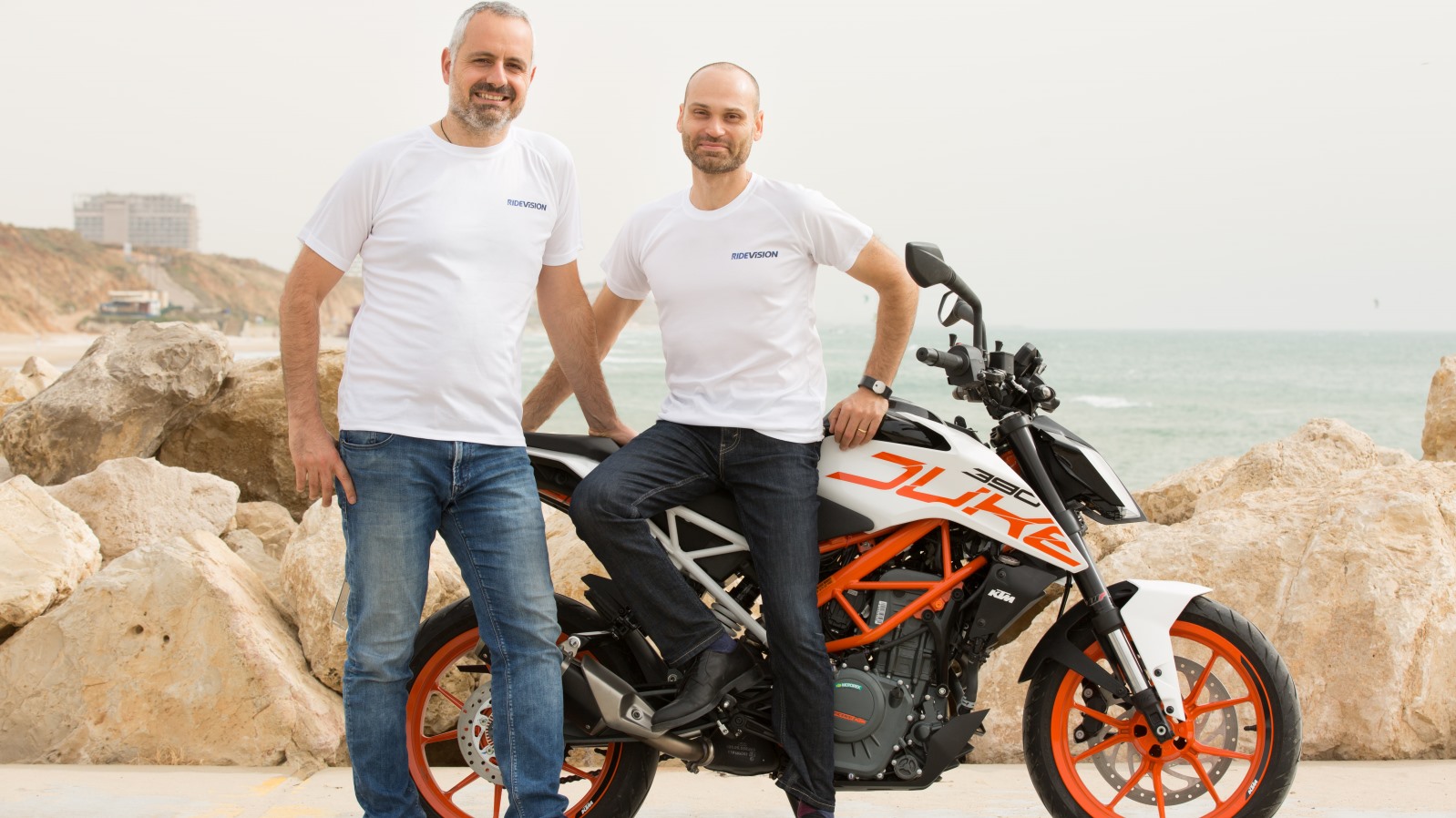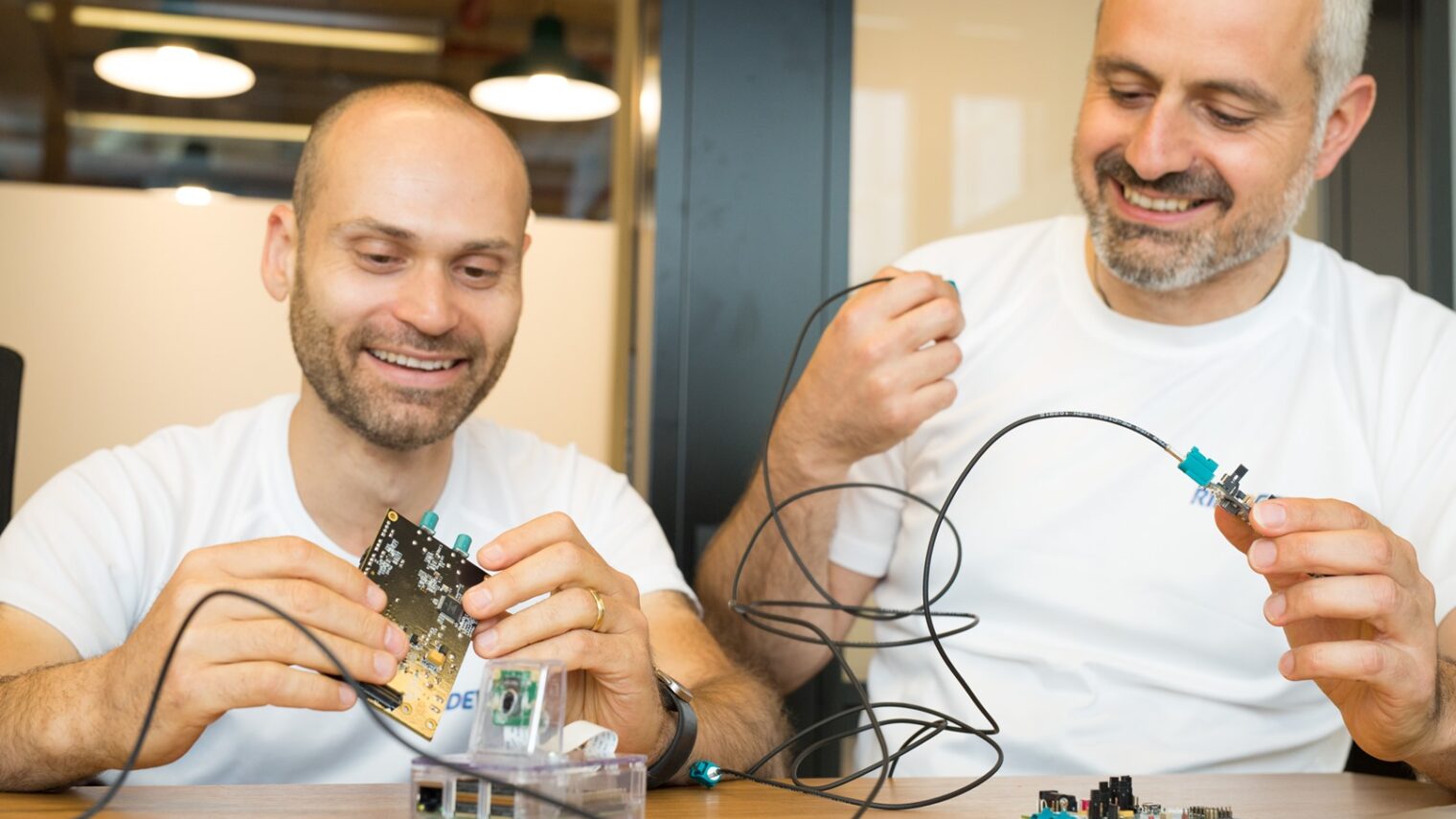As the race heats up toward the launch of autonomous vehicles, state-of-the-art technologies like ADAS (Advanced Driver Assistance Systems) are being designed to prevent collisions. But motorcycles have been largely overlooked in the process.
According to a 2018 US National Highway Traffic Safety Administration report, fatalities in traffic crashes occur nearly 28 times more frequently for motorcycles than for passenger car occupants, and motorcycle drivers comprise 17 percent of all driver- and passenger-related fatalities. There were 5,286 fatal motorcycle crashes in 2016 in the US, a 5.1 percent increase from 2015, according to NHTSA.
Uri Lavi and Lior Cohen are avid motorcycle riders who want to bring computer safety smarts to two-wheelers. Their company Ride Vision just raised a $2.5 million seed round from YL Ventures for its patented CAT (Collision Aversion Technology) for motorcycles.
Lavi and Cohen previously worked together in Israel’s homeland security industry. Lavi went on to become CEO of PicScout and brought in Cohen to serve as VP of R&D.
PicScout developed a technology for identifying images on the web that may have been used or modified without permission and then notifying the copyright owners. The company was acquired in 2011 by Getty Images for $20 million.
Lavi and Cohen gained expertise in technologies such as artificial intelligence, neural networks, computer vision and threat detection that is relevant in their newest venture, though it is quite different.
“Motorbike riders are typically coordinated, alert and very much in tune with the road. We have a special relationship with the road, but unfortunately many factors beyond our control increase the risk of collision,” Lavi explains, adding that “the high speed, lightweight, fully exposed nature of the bike makes collisions more dangerous.”
Off-the-shelf cameras
ADAS generally uses a combination of radar, LIDAR, high-tech cameras and sensors to prompt an autonomous vehicle to self-correct or warn a driver of a potential collision. But all that equipment is expensive – fine for a pricey new car, but over budget for motorcycles.
Lavi and Cohen decided to use standard off-the-shelf cameras enhanced by software to provide ADAS-level protection for two-wheelers. Low-cost cameras work for motorcycles because cyclists typically avoid riding in bad weather conditions, so there’s less need for the kind of advanced sensors that work in heavy snow and rain.

In a typical Ride Vision configuration, two small cameras (no larger than 2.5×2.5 cm each) are mounted on the front and back of the motorcycle. The cameras have wide angles – Ride Vision’s current prototype is 175 degrees – so when combined, the two devices provide nearly 360-degree vision.
A plastic extension mounted on top of the motorcycle’s left- and right-side mirrors has LED lights that flash in different colors and patterns depending on the detected threat.
“If a forward collision is detected, both extensions blink in red,” Lavi tells ISRAEL21c. “If it’s coming from the hard right, just the right mirror blinks.”
The Ride Vision system also sends audio cues to a rider wearing a Bluetooth-connected helmet. Such helmets are becoming increasingly common, as they enable riders to talk hands-free on their mobile phones.
The combination of visuals and sounds is not unlike a Mobileye unit, which alerts drivers who are getting too close to another car or veering out of their lane.
Ride Vision’s cameras also keep a record of everything they see, which can be useful as evidence in case of an accident.
The entire system, including the computing unit, takes its power (“it’s low,” Lavi assures us) from the battery on the motorcycle.
The software is the real star of the ride, Lavi says. Ride Vision’s algorithms quickly analyze a motorcycle driver’s behavior and the behavior of drivers in the cars around it to predict when an accident might be imminent. Threats can be detected in just one tenth of a second.
Ride Vision’s biggest competitors, KTM and Ducati, have their own systems that can identify an object such as a vehicle getting too close, but can’t tell if that vehicle is moving in a way that may lead to a collision. BMW has a motorcycle safety technology as well, but it’s mainly a “blind spot warning system,” Lavi says, and is limited to just BMW models.
Sights on Asian market
Ride Vision can be installed on any motorcycle – new or aftermarket. The latter is the biggest opportunity for the company.
Sales of new two-wheelers this year are expected to go as high as 124 million units, while an estimated 300 million to 500 million existing motorcycles on the roads could be retrofitted with a Ride Vision CAT system for less than $300 per bike.
Ride Vision is talking with motorcycle manufacturers and Tier 1 integrators (the companies that do the installation) to allow a new bike to come with CAT ready to go (much like many new cars have Mobileye built-in).
While Ride Vision isn’t limiting sales, “the Asian market is where we shine the most,” Lavi tells ISRAEL21c. It’s not just that there are more two-wheelers per capita in countries like India and China compared with North America. Accidents involving two-wheelers can impact some 2-3 percent of a country’s total GDP when fixed costs from the accident and ongoing medical treatment are factored in, Lavi points out.
Because Ride Vision is so software-centric, it can “learn” about the traffic behavior of drivers in different countries. In many Asian countries, for example, “there’s a very packed environment on the road with many two-wheelers in one place,” Lavi says. North American roads are less congested. “Our algorithms take that into consideration.”
Lavi says Ride Vision can cut costs even more for the Asian market. Because of the way motorcycles tend to navigate there, “we only really need to focus on front and side collisions,” he says. Since the Ride Vision product is built to be modular, the back camera can be dropped, thus spurring greater adoption.
Ride Vision, which employs a team of seven in Herzliya, expects its first product to be ready for manufacturers to start integrating by mid-2019. The aftermarket product will come a year later, although given how long it can take a manufacturer to roll out a new motorcycle with everything included, the standalone kit may come to market first, Lavi suspects.
“There’s really nothing available like this for motorcycles today. Any tool a company extends to me as a rider will be a huge blessing,” he says.
For more information, click here.














